If there’s one theme running through the production of the now acclaimed television series Normal People it’s attention to detail. The challenges of adapting a hugely successful novel to screen are many, but one of them is making the abstract solid in terms of setting and place. If tens of thousands of readers’ imaginations have outlined the spaces they envisage characters moving through, how do you colour those in?
The answer lies within another imagination, that of the individual and collective one of the crew of Normal People, who were bringing author and screenwriter Sally Rooney’s words to life.
The location manager on Normal People was Eoin Holohan, who leaned into the scope Rooney’s writing provided. “What’s amazing about Sally’s book is she doesn’t really describe the locations – she describes what people are wearing, how they look, what they’re thinking. But the locations are just kind of sketched.”
Holohan has worked across a wide variety of film and television productions; Star Wars: The Last Jedi, The Fall, Rebellion, Sing Street, The Lobster, and Frank (also directed by Lenny Abrahamson, who directed six of Normal People’s 12 episodes, with Hettie Macdonald sharing directing duties).
'It was one of those jobs that was really relentless, but you get the head down... It was always: it has to look amazing'
“What happens is I get a script, and I break down the script. In this instance we got Lenny’s block first. I started with his six episodes. You break down a script in locations – interior, exterior – and then what I do is I find out the volume of work in each location. So the locations with the highest page count are the key locations.”
After that stage “I would sit down with Lenny, and if there’s a production designer on board. I work with them really closely. They are key.”
In this situation that relationship between location manager and production designer had an added element. “This job was really unique, because the production designer happens to be my wife.”
In a crew that has nothing but praise for each other, production designer Lucy van Lonkhuyzen is frequently mentioned by crew members for doing a knockout job, along with Lorna Marie Mugan, who was the costume designer for the series, and make-up artists Sonia Dolan and Emma Moffat, and make-up designer Sharon Doyle.
Marianne’s houses
Although the production keeps the privacy of those who live in or own shooting locations paramount, it has since been reported that “Marianne’s house” was in fact once the family home of outgoing minister for transport, tourism and sport Shane Ross.
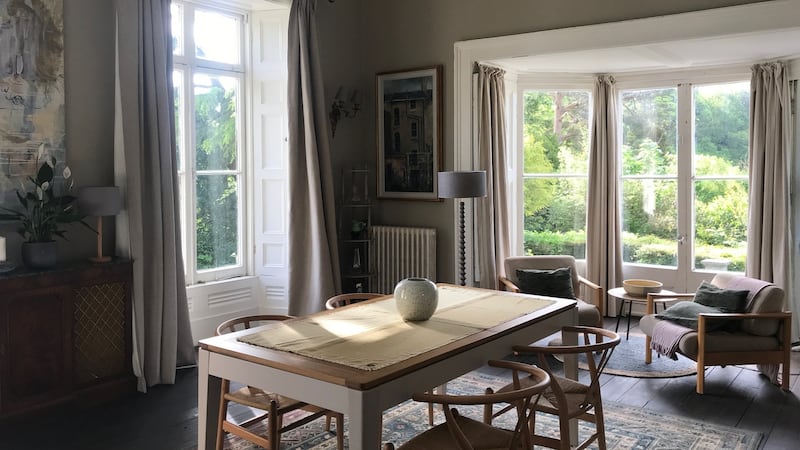
Knockmore House in Enniskerry, Co Wicklow, lies between Powerscourt House and Gardens and Bray Head. Early references for Marianne's family home were mostly McMansion-type locations, but then they came upon Knockmore, which had recently been sold. "We had that golden opportunity where they [the new owners] weren't going to do anything with it until after the summer. That house was a shell. We painted the walls, brought in all the furniture, designed it top to bottom."
A house on Wellington Road in Dublin 4 became the location for Marianne’s Trinity-era home. The nieces of owner Mary Moloney, in their early 20s, were living in the house at the time, which partly inspired Abrahamson to incorporate it into the shoot.
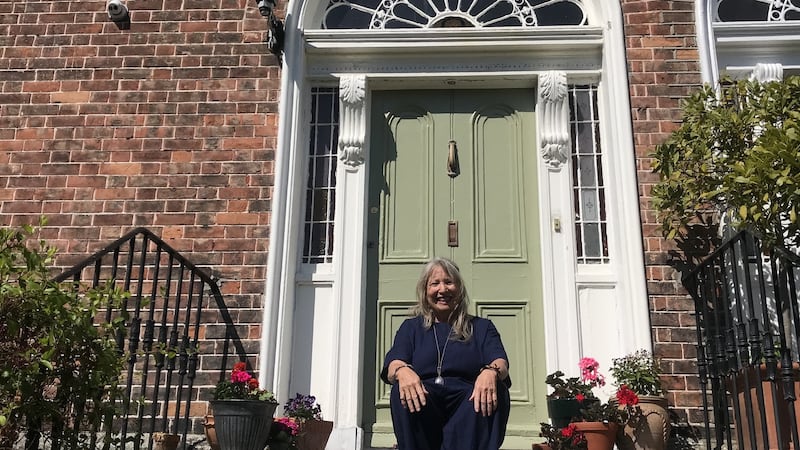
Holohan had previously scouted the house for the film Vita & Virginia. “The house dates from 1840, and it’s only been on the open market once, in 1920,” Moloney says, “It’s never been modernised, never been renovated, and it has always been quite feminine, quite arty. There have mostly been women living in it… It’s always been in a female line, so it has that vibe.
“Lucy the production designer was fantastic. She came in and almost created a painting in the house. She transformed it. On TV it’s still my house, but also not really. Lucy brought stuff in, moved furniture in and out, changed pictures. She’s very impressive.
“What’s most different [on screen] is the kitchen. They painted it twice so they could get that yellow, and then they painted it all back. They left some plants behind, which are very nice.”
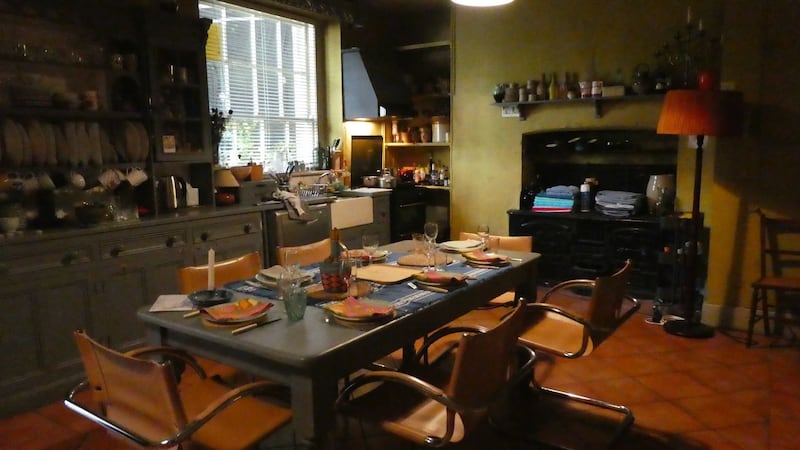
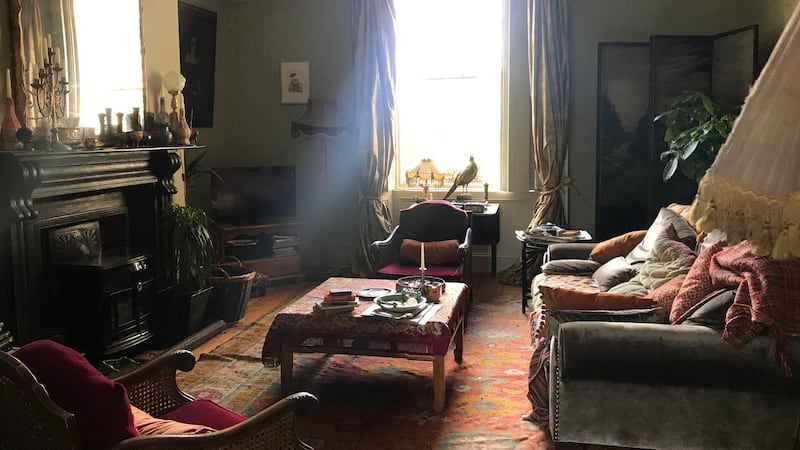
The pool party
When it came to finding a house with a swimming pool to film a party scene, the house they used ended up providing more locations than initially expected. Holohan’s assistant location manager Evelyn O’Neill remembered scouting a house on the outskirts of Dublin for a previous shoot.
“It has that very nice sunken lounge area, a very cool house. Lucy really liked that for the party scene. We approached the owners and said ‘we like the pool, but any chance we could stay a little bit longer and use it for the party scene?’ That was quite a big deal because we had to take everything out and put it in storage.”
The Sligo town and beach
The Sligo town location is Tubbercurry in the south of the county. They used Brennan’s pub in Tubbercurry as a location, as well as the local church. “The priest could not have been more helpful,” Holohan says.
Streedagh strand in Sligo was the beach location. The school debs scenes took place in White Sands Hotel in Portmarnock, Co Dublin, and the fundraiser event scenes were filmed in Tamango nightclub inside the same hotel.
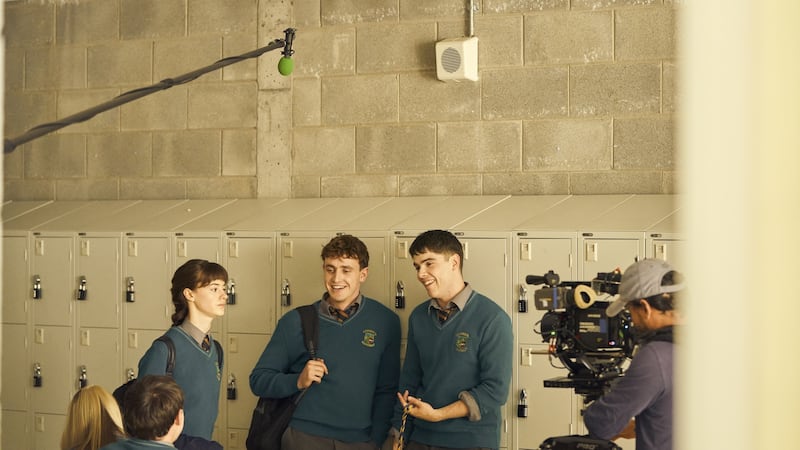
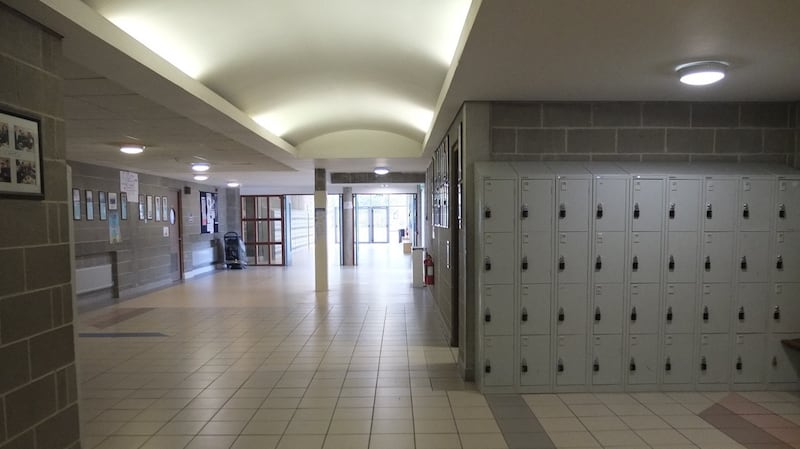
The school
Holohan's favourite location was the school. Although supposedly in Sligo, the location is Hartstown Community School in Dublin 15.
Initially Holohan was looking at newer builds and modern schools. “That was one of the locations that when I showed it to everyone, everybody was like ‘that’s the school’.”
What especially appealed to Holohan were “all these endless corridors. The camera kind of floats behind their heads, so it’s perfect for that… When I saw it on screen I couldn’t have seen it work in any other school... I knew that when we got to Trinity, with the greyness, the nerds might see ‘oh there’s a symmetry’!”
The Trinity locations
Logistically the biggest challenge was always going to be filming in Trinity College, a location that dominates a large chunk of Rooney's novel. Holohan had shot in Trinity before, so he knew that it was complex to film there, but also had a relationship with the university. Shooting in the summer would help in one way, given that students would be mostly off campus, but it's also a time when tourists fill the front square, and snaking queues form to see the Book of Kells.
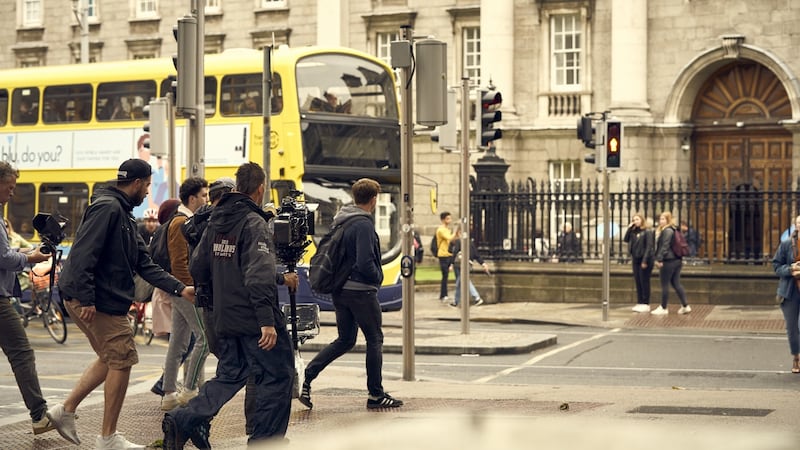
“What we did in there was mental,” Holohan recalls. “Some days we were doing five locations [in Trinity] in one day.”
Abrahamson, who attended Trinity College, as did Rooney, was keen to use the Berkeley Library, and so that was a location for Connell’s studying (“I think it might be the desk Lenny used to use,” Holohan says), and Marsh’s Library was used for Marianne’s scenes. The focus was on the visual treats the brutalist architecture of Trinity offers.
Other locations were also used, with “a lot of the college stuff” shot in St Patrick’s College in Drumcondra, Dublin. Even some of the scenes located in Sweden in the series were shot there in the 1960s-era student accommodation building on campus. Other “Swedish” locations were the Stables at Dublin’s Fumbally cafe, which itself was also used for another Dublin-based scene.
Lukas’s loft
For Lukas’s character, the crew needed a very particular loft-style apartment. “We had decided that his apartment needed to be up in the eaves of a building, a big huge photographer’s studio space with his bed.”
They considered the Chocolate Factory in Dublin 1 off Parnell Street, but there were too many windows. As an alumnus of the National College of Art and Design, van Lonkhuyzen remembered a space in the painting department. “We cleared out loads of partitions, and then you had the coolest apartment you’d want to live in.”
The art gallery
For the art gallery scenes they managed to access the Hugh Lane Gallery, where the ground floor was relatively empty due to delayed renovations. Van Lonkhuyzen built a set in the likeness of the Peggy Guggenheim Collection in Venice in the atrium of the Hugh Lane.
“That’s a build just for that brief scene. They are two little scenes, but they’re really important. You’re pulling your hair out. These are just going to be shot over a few hours. But the walls had to be the exact same colour as the walls [in Venice].”
The therapist’s clinic
For the scenes with Connell’s therapist, they kicked around a few ideas until Lynn Daly, Dublin City Council’s film officer, suggested the Rates Office on Dame Street.
The restaurant
Another example of the dedication to authenticity across the production was when Holohan was scouting a location for a very brief scene where Connell is dining with his girlfriend Helen’s family in an Asian restaurant. “We looked in every single authentic Asian restaurant on Parnell Street and Capel Street. We did not have the time or resources to do that, but we did it.”
In the end they chose a restaurant at the back of a shop on Capel Street. “The last thing I want to be doing is bringing a crew to Capel Street, get the truck, shut down the Asian supermarket, shoot a restaurant in the back. But I’ll do it for Normal People. When you think about their characters, they’re not going to be eating sh*te, they’d be going to go to the real thing. It has to be real. It has to be authentic.”
And the finished result?
“It was one of those jobs that was really relentless, but you get the head down. Honestly, we never stopped trying to make it look good. We never took the easy option. It was always: it has to look amazing.”

















